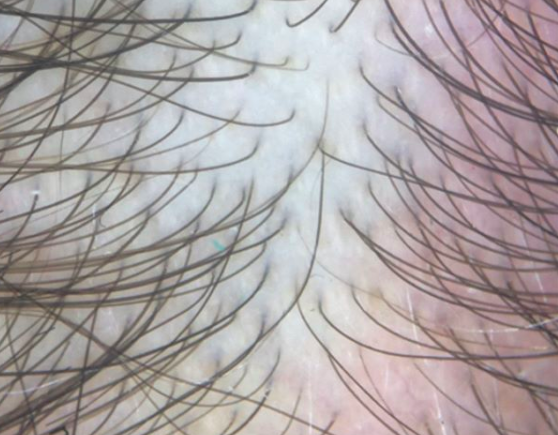Female Pattern Hair Loss
Major and Minor Criteria
Female androgenetic alopecia is common. By the age of 50, well over 1/3 of women will have androgenetic alopecia (AGA)- also known as female pattern hair loss (FPHL). This type of hair loss causes thinning in the frontal and mid scalp. The sides and back may also be affected but generally to lesser degrees than the front for most women. Traditionally, the diagnosis of androgenetic alopecia has been made based on the finding of reduced density in the frontal scalp compared to the back of the scalp and the clear demonstration via dermoscopy that there is a variation in the diameter if more than 20% of hair follicles. This is known as anisotrichosis.
In 2009, Dr Rudnicka and colleagues proposed a series of major and minor criteria for diagnosing FPHL.
FPHL MAJOR CRITERIA
(1) ratio of more than four empty follicles in four images (at 70-fold magnification) in the frontal area
(2) lower average thickness in the frontal area compared to the occiput
(3) more than 10% of thin hairs (<0.03 mm in diameter) in the frontal area.
FPHL MINOR CRITERIA
(1) increased frontal to occipital ratio of single-hair pilosebaceous units
(2) vellus hairs
(3) peripilar signs.
Remarkably, the presence of two major criteria or of one major and two minor criteria allow diagnosis FPHL with 98% specificity.
Reference
Rakowska A et al. Int J Trichol. 2009;1:123–30.
This article was written by Dr. Jeff Donovan, a Canadian and US board certified dermatologist specializing exclusively in hair loss.

